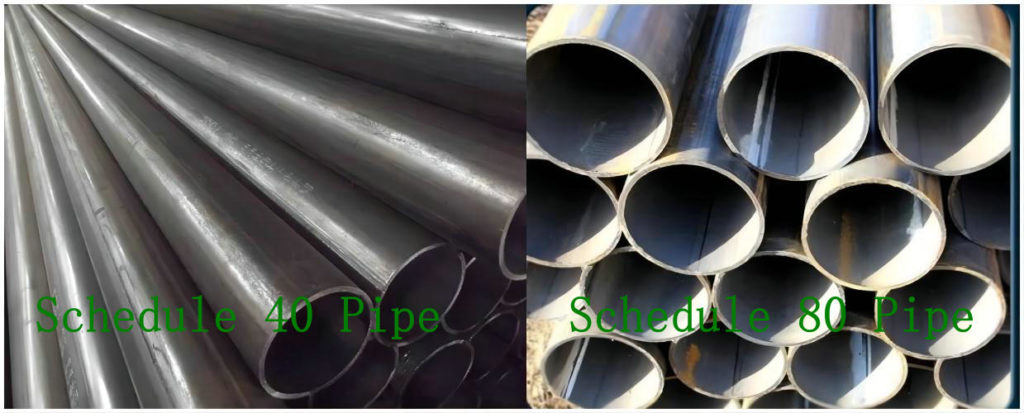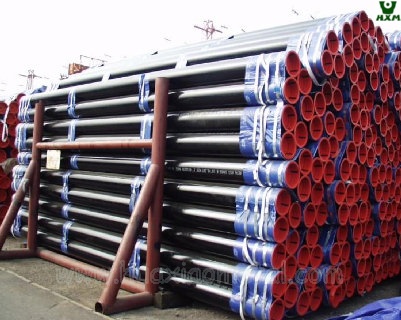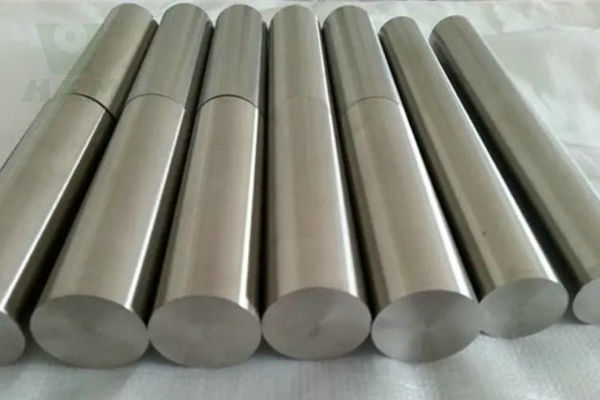Pipelines are essential infrastructure in the construction and engineering fields, carrying a wide range of fluids and gases. However, when selecting a pipe to suit your specific project needs, you may be faced with a range of options, including different pipe grades.
In the plumbing market, Schedule 40 and Schedule 80 pipes are two common options. Although they are both solid pipes used in different applications, there are some significant differences between them. Understanding these differences is critical to properly selecting piping for specific project needs.

What is a Pipe Schedule?
A pipe schedule(SCH) is a file or document that contains detailed information about the piping system used in a specific engineering project. This information can include the material, size, quantity, type, purpose, installation location, connection method, support method, and other relevant technical specifications and requirements of the pipes. Typically, a piping schedule is part of an engineering project and provides a comprehensive understanding of the entire piping system for effective planning and control of material procurement, construction installation, and project management.
Here is some basic information a pipe schedule might contain:
- Pipe Identification: Each pipe may have a unique identification number for identification and tracking within the project.
- Pipe materials: Including specifications, types, and grades of materials used in pipes, such as steel, copper, plastic, etc.
- Pipe size: Includes relevant dimensional information such as pipe diameter, wall thickness, and length.
- Pipe Quantity: Indicate the quantity of each pipe material and size for procurement and installation planning.
- Connection method: Indicates the connection method between pipes, such as welding, threaded connection, or other types of connection.
- Method of Support: Indicates how the pipe is supported to ensure that it can withstand the weight of the fluid it carries.
- Installation Location: Indicate the specific installation location of each pipe to facilitate positioning and installation during construction.
- Purpose: Indicate the purpose of each section of pipe and the system it serves, such as water supply, drainage, heating, cooling, etc.
What is the Difference Between Schedule 40 and Schedule 80 Pipes?
Schedule 40 and Schedule 80 are standards used in the piping industry to identify pipe wall thickness. The difference between them is their wall thickness and pressure-bearing capacity.
Wall Thickness: Schedule 40 pipe has thinner walls, while Schedule 80 pipe has thicker walls. This means that Schedule 80 pipe has a higher pressure resistance and greater strength than Schedule 40 pipe of the same size.
Pressure Bearing Capacity: Due to its thicker wall thickness, Schedule 80 pipe is able to withstand higher pressures than Schedule 40 pipe. This makes Schedule 80 pipe more suitable for use in applications requiring higher pressure or temperature.
Usage: Schedule 40 pipe is commonly used in general industrial and residential applications such as water supply, drainage, heating and air conditioning systems, etc. Schedule 80 pipe is typically used in applications requiring higher pressure or temperature, such as chemical plants, industrial equipment, and other environments that require greater pressure resistance.
Cost: Due to its thinner wall thickness, Schedule 40 pipe is generally less expensive than Schedule 80 pipe. Therefore, in low-pressure or general applications, using Schedule 40 pipe can reduce costs.
It is important to note that selecting the appropriate pipe depends on the specific application requirements. When selecting pipe type and size, the required pressure, temperature, fluid properties, and specific application scenario should be considered. In addition, when selecting pipelines in engineering projects, relevant national and regional pipeline standards and specifications should also be followed.
How to Choose the Right Pipe for your Project Needs?
There are several key factors to consider when choosing the right pipe to suit your specific project needs. These factors will help ensure that the pipeline will meet expected engineering requirements and be suitable for the expected work environment. Here are some key considerations:
Project Requirements:
First of all, it is necessary to clearly understand the specific requirements of the project. This includes the required pressure capacity of the pipe, temperature requirements, fluid type, and other related special requirements. For example, if the project frequently withstands high-pressure or high-temperature environments, it may be more appropriate to select a more durable pipe material.
Cost Factor:
In addition to engineering requirements, cost is also a crucial consideration. Generally speaking, Schedule 40 plumbing is relatively inexpensive, while Schedule 80 plumbing will cost slightly more. Therefore, for projects with tighter financial budgets, there may be a trade-off between cost and performance.
Durability and Reliability:
Depending on the specific project needs, the expected life of the pipe and its tolerance for damage and wear will need to be considered. Schedule 80 pipe is generally more durable and able to withstand higher pressures than Schedule 40 pipe, but this may increase the cost. Therefore, when choosing a pipe, you need to weigh its durability against long-term operating costs.
Environmental Factors:
It is also important to consider the environmental conditions to which the pipeline is exposed. If your pipes will be exposed to harsh environments, such as chemically corrosive substances or extreme temperature changes, you need to choose pipe materials that can withstand the effects of these environments.
Maintenance Requirements:
Finally, the cost and difficulty of maintaining your pipes are also factors to consider. Choosing a duct system that is easy to maintain and repair can reduce the effort and cost of routine maintenance, thereby increasing overall project efficiency.
Taking these factors into consideration will help engineers and project leaders select the pipe material and grade that best suits their specific project needs. By carefully weighing the pros and cons of different options and making informed decisions based on the actual situation, you can ensure that your piping system performs optimally during the project and achieves long-term reliable operation.
In Conclusion:
When comparing Schedule 40 and Schedule 80 pipes, it can be seen that there are several key differences between them. Schedule 40 pipe, while relatively lightweight and less expensive, has lower endurance and is suitable for general use and low-pressure environments. Schedule 80 pipe, on the other hand, is stronger and more durable and can withstand higher pressures and harsh environments, but it also costs more. Therefore, the specific requirements of the project as well as the environmental conditions need to be considered when selecting pipes suitable for the needs of a specific project.
For low-pressure, general-purpose applications, and cost-sensitive projects, Schedule 40 pipe may be a more appropriate choice; for projects that need to withstand high pressures and harsh environmental conditions, or projects with higher durability requirements, Schedule 80 pipe may be more appropriate. is a more reliable choice. In addition, environmental conditions, maintenance requirements, and long-term operating costs are also factors to consider when selecting the appropriate pipeline.
In summary, understanding the differences between these two types of pipes and the different scenarios in which they are suitable can help engineers and project leaders make informed choices, ensuring that the selected pipes can adapt to specific project needs and provide long-lasting performance and security.







